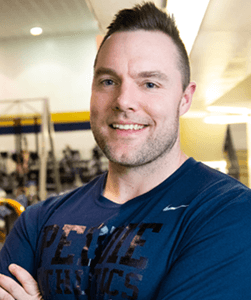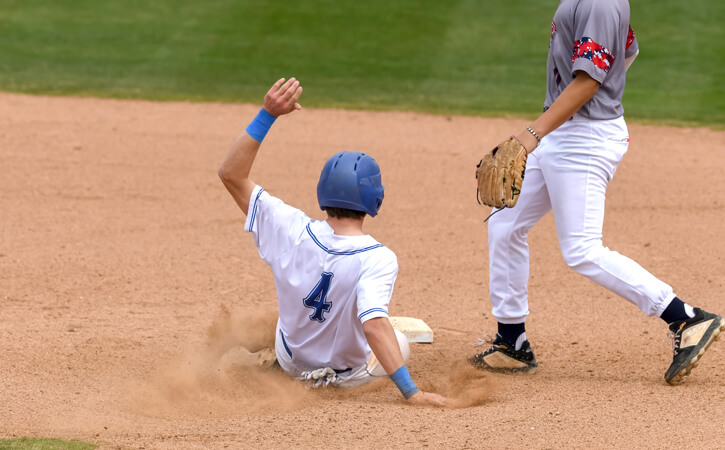August is here—and with it, the final innings of summer travel and club baseball. As your last tournament winds down, now is the perfect time to shift focus from the grind of competition to one of the most underrated aspects of athletic development: recovery.
Sure, a few days off playing video games is fine, but the best players approach their recovery the same way they’d attack a 2-0 fastball—with full intent. If you want to dominate in Fall Ball, now’s your chance to build the foundation for better performance.
Why Recovery Matters
We all love to train hard, but too many athletes forget that recovery requires equal effort. Overuse injuries—defined as the result of overly intensive training and inadequate rest—are on the rise, even among young players. Surgeons are seeing a surge in major injuries like UCL tears, leading to more Tommy John surgeries in youth baseball than ever before.
The bottom line is this: Faster recovery = better performance.
Here are three powerful recovery strategies that every baseball player should prioritize as the season slows down.
1. Prioritize Sleep Like a Pro
Sleep is hands down the most powerful tool in your recovery toolbox. No supplements, no cryotherapy chambers—just good, quality sleep.
💤 Sleep tips for baseball players:
- Be in bed by 10 PM. That means shutting off screens and social media early.
- Black out your room. Darkness boosts melatonin and improves sleep quality.
- Use earplugs or a white noise machine to block distractions.
- Create a sleep routine. Just like your pre-game routine, consistency matters.
- Write out tomorrow’s to-do list before bed to ease your mind and reduce stress.
Pro teams are investing in sleep doctors to help players adjust to travel and improve recovery. If the pros are doing it, you should too.
2. Move to Recover: Light Lifting & Activation Workouts
Summer travel ball is a grind. You’ve likely missed a few sessions in the weight room. Now’s the time to get back to lifting—but start slow.
💪 Light movement boosts blood flow and promotes healing. The goal isn’t max strength—it’s muscle activation.
🔥 Recommended recovery workouts:
- Sled Pulls: Load lightly and focus on movement, not resistance.
- Bodyweight Circuits: Jump rope, squats, walking lunges, push-ups, TRX rows, and band pull-aparts. Do 2 sets of 10–15 reps each.
- Fan Bike or Air Bike: Ride for 20–30 minutes at 60% intensity for full-body blood flow.
This kind of “active recovery” will help eliminate soreness and prep your body for your next training phase.
3. Make Self-Myofascial Release a Daily Habit
Foam rolling isn’t just for warm-ups—it’s essential for daily recovery. Spend 10–15 minutes per day targeting sore areas and tight tissue.
🌀 Tools for SMR:
- Foam rollers (standard, PVC, or Rumble Roller)
- Lacrosse balls or massage balls
- “The Stick” or other massage tools
- TriggerPoint kits or massage guns
These tools help improve circulation, break up scar tissue, and reduce post-season muscle tightness.
BONUS: Prehab > Rehab
One of the best ways to recover is to avoid injury in the first place. Enter prehab—rehab-style exercises you perform before you’re hurt.
🦵 Prehab examples by area:
Knees:
- Strength Band TKE (Terminal Knee Extension)
- Foam Roll IT Band
- Single-Leg Glute Bridge
Hips:
- Bulgarian Squat Stretch
- Cook Hip Lift
- Mini Band Lateral Walks
Shoulders:
- Band Pull-Aparts
- Side External Rotations with Bands
- Dumbbell Prone “T” Raise (3–5 lbs)
These small but powerful movements will keep your joints healthy and ready for high-intensity performance.
BONUS: Hydrotherapy and Contrast Showers
Water can be your recovery secret weapon.
🏊♂️ Hydrotherapy: Jump in the pool with teammates! Swimming and water-based play take pressure off joints while boosting blood flow and decreasing soreness.
🚿 Contrast Showers: Alternate hot and cold water post-workout. This stimulates circulation, reduces inflammation, and accelerates muscle repair.
❄️ Old-school ice: Use an ice roller or cold packs after games or tough training days. Ice reduces swelling and muscle fatigue—especially when combined with SMR techniques.
✅ Sample Recovery Day Plan
After a solid 8–10 hours of sleep…
- Fan Bike – 20 minutes at light intensity
- Full Body Circuit (2–3 sets x 10–15 reps each):
- Stability Ball Single-Leg Glute Bridge
- Bodyweight Bulgarian Squat
- Yoga Push-Up
- Band Pull-Aparts
- TRX or Ring Row
- Dumbbell Prone “T” Raise
- Foam Roll or Ice Roller – Target sore areas from the season
Final Thoughts
Recovery is more than just rest—it’s strategic preparation. When done right, it allows you to train harder, play longer, and perform better.
Use this time wisely, and you’ll head into fall baseball stronger, healthier, and more prepared than ever.
Want to take your baseball development to the next level?
Check out my new book, The High School Athlete: Baseball, featuring a full in-season training program for high school players—plus exclusive insights from MLB All-Star Josh Bell.
Similar articles:
3 Ways to Maximize your Baseball Pre-Season
Top 10 Training Tips for High School Baseball Players

MICHAEL VOLKMAR, MS, CSCS, PES, CPT, received his master’s degree in Exercise Science with a specialization in Exercise, Nutrition, and Eating Behavior from George Washington University (GWU). In 2001, Mike started his well-traveled path in Sports Performance Training at the Junior College level (OCC, Onondaga, NY) working with the baseball team. He worked for three years as the Strength and Conditioning Coach at GWU, first with the Single A affiliate (High Desert Mavericks) of the Milwaukee Brewers, and later season with the Double A affiliate (Harrisburg Senators) of the Washington Nationals, before moving on to spend one year at the International Performance Institute of IMG Academies, FL. Mike continued his professional development by becoming the Director of Strength and Conditioning at the APEX Academies. Currently, Mike is the strength and conditioning coach at the Peddie School. A Division I baseball player during his undergraduate career, Mike is an amateur powerlifter with a passion for all things fitness. Mike has advanced specialty certifications in strength and conditioning, post-rehab exercise, athletic development, and sports medicine.





